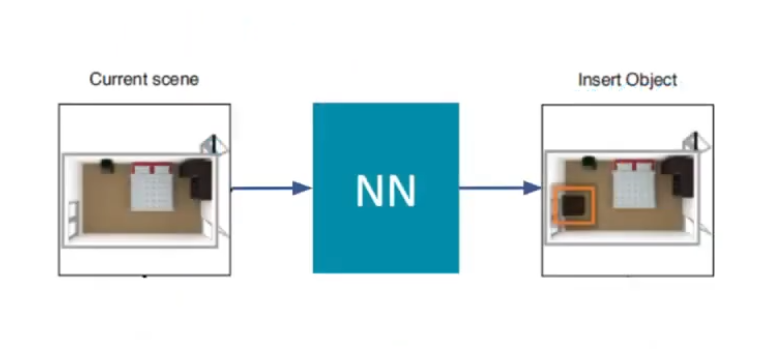Notes on Learning Generative Models of 3D Structures
ai
notes
In this presentation, Tao Wu provides a comprehensive overview of generative models for 3D structures, exploring various 3D representations, generative methodologies, and applications.
- Introduction
- Structure-Aware Representation
- Methodologies for Learning Generative Models
- Application: Visual Program Induction
TipPresentation Materials
Introduction
- Presenter: Tao Wu
- Topic: Generative Modeling for 3D Contents
- Source: 2020 survey titled “Learning Generative Models of 3D Structures”
- Focus: Concepts in 3D representations and generative networks.
- Importance of 3D Graphics:
- Critical to industries like gaming, animation, architecture, and interior design.
- Problem: Lack of training data due to high costs of data capturing and human labeling.
- Solution: Generative models can help address this data scarcity.
- Generative vs. Discriminative Models:
- \[ P(X) \ vs \ discriminative: P(Y|X) \]
- Generative models learn the probability distribution over an input space (x). They can sample objects directly from x.
- Discriminative models learn to predict an attribute (y) given an input (x).
- Benefits of Generative Models:
- Simulating real-world environments.
- Synthetically generating training data.
- Target Audience: New graduate students in computer science.
- Survey Scope:
- Large range of historical work.
- Recent progress on generative 3D modeling.
Structure-Aware Representation
- Focus: Learned generative models of structured 3D content.
- Learned Model: Trained with data instead of manual creation or rule-based systems.
- Structured 3D Shapes and Scenes: Collections of substructures, which can be further decomposed.

- Example:
- An indoor scene (room) consists of a chair, desk, and bed.
- A chair can be decomposed into a base, seat, and back.
- Example:
- Structure-Aware: Expressing 3D entities while allowing manipulation of their high-level structure.
- Two Aspects of Structure-Aware Representation:
- Geometry of atomic elements.
- Structural patterns.
Representations of Low-Level Geometry
- Point Clouds: (Covered in previous lectures)
- Triangle Mesh: (Covered in previous lectures)
- Implicit Surface: A function determining whether a point is inside or outside a surface.
Representations of 3D Structures
- Segmented Geometry: Linking a label to each part of the entity’s geometry.
- Partsets: An ordered set of atoms.
- Relationship Graphs: Edges connect different parts.
- Hierarchies (Trees): Representing parent-child relationships between parts.
- Hierarchical Graphs: Combining relationship graphs and hierarchies.
- Deterministic Program:
- Most general way to represent 3D structures.
- Can output any of the previous representations.
- Beneficial for making patterns clear and allowing easy editing.
Methodologies for Learning Generative Models
Synthesis Methods Flowchart

- Constraint-Based Program Synthesizer: Best for few training examples. Finds the minimum cost program satisfying certain constraints.
- Classic Probabilistic Models: Suitable for larger datasets (but not large enough for deep learning).
- Probabilistic Graphical Models (e.g., Bayesian network, Markov random field): Best for content with a fixed structure.
- Probabilistic Context-Free Grammar (PCFG): Better for varying structures.
- Context-Free Grammar (CFG): Used in Natural Language Processing (NLP).
- Consists of a start symbol, a set of terminals, a set of non-terminals, and rules mapping non-terminals to another layout.
- Example:
- Non-terminal: F
- Terminals: Left arrow, Right arrow, Leaf node
- Derived tree (sentence) contains only terminals.
- PCFG: Augments CFG with probabilities for each rule.
- Probability of a derived tree is the product of applied rule probabilities.
- Suitability: Well-suited for dynamic model structures due to dynamic recursive nature.
- Context-Free Grammar (CFG): Used in Natural Language Processing (NLP).
- Deep Neural Networks (DNNs): Often the best choice when a large amount of training data is available.
- Autoregressive Model: Iteratively consumes its output from one iteration as input to the next.

- Example: Inserting one object at a time to generate an indoor scene.
- Weakness: Prone to drift; errors in one step can cause subsequent outputs to diverge.
- Variational Autoencoders (VAEs) and Generative Adversarial Networks (GANs):
- Popular in recent years.
- Sample over a low-dimensional latent space.
- Learn a generator that maps latent vectors to 3D shapes.
- Use a global latent variable to control generation.
- Trained with a reconstruction loss between input and generated output.
- Advantages: Often outperform autoregressive models in global coherence.
- Network Suitability: Different neural networks perform better with specific structured data representations.
- Autoregressive Model: Iteratively consumes its output from one iteration as input to the next.
Application: Visual Program Induction
- Definition: Synthesizing a plausible program that creates 3D content.
- Process: Recovering the generator program from existing 3D shapes.
- Early Examples: Reconstructing 3D shapes via simple geometric primitives.
- Example (2017 work): Decomposing shapes into primitives and using chamfer distance as a loss function.
- https://github.com/shubhtuls/volumetricPrimitives
- Learning Shape Abstractions
- Learning Shape Abstractions by Assembling Volumetric Primitives
- Example (2017 work): Decomposing shapes into primitives and using chamfer distance as a loss function.
- More Recent Work:

- Outputting 3D shape programs with loops and high-level structures.
- Executing the program to reconstruct shapes.
- https://github.com/HobbitLong/shape2prog
- Learning to Infer and Execute 3D Shape Programs
- Visual Program Induction from 2D Images:
- Inferring programs that generate 2D diagrams from hand-drawn sketches.
- Using inferred programs for downstream tasks like image editing.
- https://github.com/paschalidoud/superquadric_parsing
- Benefits: Efficient and flexible scene manipulation.
TipAbout Me:
I’m Christian Mills, an Applied AI Consultant and Educator.
Whether I’m writing an in-depth tutorial or sharing detailed notes, my goal is the same: to bring clarity to complex topics and find practical, valuable insights.
If you need a strategic partner who brings this level of depth and systematic thinking to your AI project, I’m here to help. Let’s talk about de-risking your roadmap and building a real-world solution.
Start the conversation with my Quick AI Project Assessment or learn more about my approach.